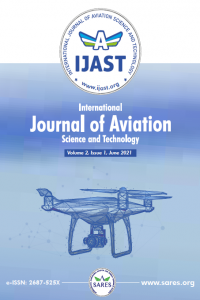The Detection Capability Of Laser Fuze In Fog, Mist, And Haze Using Monte Carlo Simulations
The Detection Capability Of Laser Fuze In Fog, Mist, And Haze Using Monte Carlo Simulations
___
- W. K. Pratt,(1969). Laser Communication Systems, J. Wiley & Sons, New York.
- T. J. Hu, Y. L. Zhao, Y. Zhao, and W. Ren, (2017). Integration design of a MEMS based fuze, Sens. Actuat. A 268, pp. 193–200.
- F. Q. Liu, (2017). Quantum cascade lasers: from mid-infrared to THz, Opt. Optoelectron. Technol. M. Kavehrad, B. Hamzeh, (2005) “Beaming Bandwidth via Laser Communications”, 5th Integrated Communications, Navigation and Surveillance Technologies Conference (ICNS), Fairfax, Virginia.
- H. X. Wang, Y. Z. Zhu, T. Tian, and A. J. Li, (2013). Characteristics of laser transmission in different types of aerosols, Acta Phys. Sinica 62, pp. 316– 325.
- K. Sato, K. Yasuo, S. Takushi and S. Isao, (2002). "Laser Welding of plastics transparent to near-infrared rasdiation," in SPIE Proceedings, San Jose.
- V. Kagan, R. Bray and W. Kuhn, (2002) "Laser Transmission Welding of Semi-Crystalline Thermoplastics- -Part 1: Optical Characterization of Nylon Based Plastics," Journal of Reinforced Plastics and Composites, vol. 21, no. 12, pp. 1101-1122.
- D. M. Winker and L. R. Poole, (1995). Monte-Carlo calculations of cloud returns for ground-based and space-based LIDARS, Appl. Phys. B 60, pp.341–344.
- S. Chudamani, J. D. Spinhirne, and A. D. Clarke, (1996). Lidar aerosol backscatter cross sections in the 2-μm near-infrared wavelength region, Appl. Opt. 35, pp. 4812–4819.
- V. Srivastava, M. A. Jarzembski, and D. A. Bowdle, (1992). Comparison of calculated aerosol backscatter at 9.1- and 2.1-μm wavelengths, Appl. Opt. 31, pp. 1904–1906.
- W. Kruse, L. D. McGlauchlin, and R. B. McQuistan, (1962). Elements of Infrared Technology: Generation, Transmission, and Detection, J. Wiley & Sons, New York.
- I.I.Kim,B.McArthur,and E.J.Korevaar, (2001). Comparison of laser beam propagation at 785 nm and 1550 nm in fog and haze for optical wireless communications in Optical Wireless Communications.
- B. Wilson and G. Adam, (1983). A Monte Carlo model for the absorption and flux distributions of light in tissue, Medical Physics, vol. 10, no. 6, pp. 824-830.
- S. Prahl, M. Keijzer, S. Jacques and A. Welch, (1989). A Monte Carlo Model of Light Propagation in Tissue, Dosimetry of laser radiation in medicine and biology, no. 5, pp. 102-111.
- A. Welch and M. van Gemert, (1995). Optical-Thermal Response of Laser-Irradiated Tissue, New York: Springer.
- M. Ilie, J. Kneip, S. Mattei, A. Nichici, C. Roze and T. Girsole, (2007). Laser beam scattering effects in non-absorbent inhomogenous polymers, Optics and Lasers in Engineering, vol. 45, no. 3, pp. 405- 412.
- Yayın Aralığı: Yılda 2 Sayı
- Başlangıç: 2020
- Yayıncı: Sürdürülebilir Havacılık Araştırma Derneği
The Detection Capability Of Laser Fuze In Fog, Mist, And Haze Using Monte Carlo Simulations
Nguyễn HOANG LİNH, Trung Dung PHAM, Hong Son TRAN, Chung NGUYEN
Electric aircraft battery performance: examining full discharge under two conditions
Denner CUNHA, Brooke WHEELER, Isaac SİLVER, Gaspar ANDRE
Architecture of Stratosphere Rocket for CubeSats
Alper ŞANLI, Tuncay Yunus ERKEÇ, Melih BECEREN, Mehmet Furkan KEMALLI
Maintenance 4.0: Automation of Aircraft Maintenance Operational Processes
Passive Isolator Design and Vibration Damping of EO/IR Gimbal Used in UAVs
